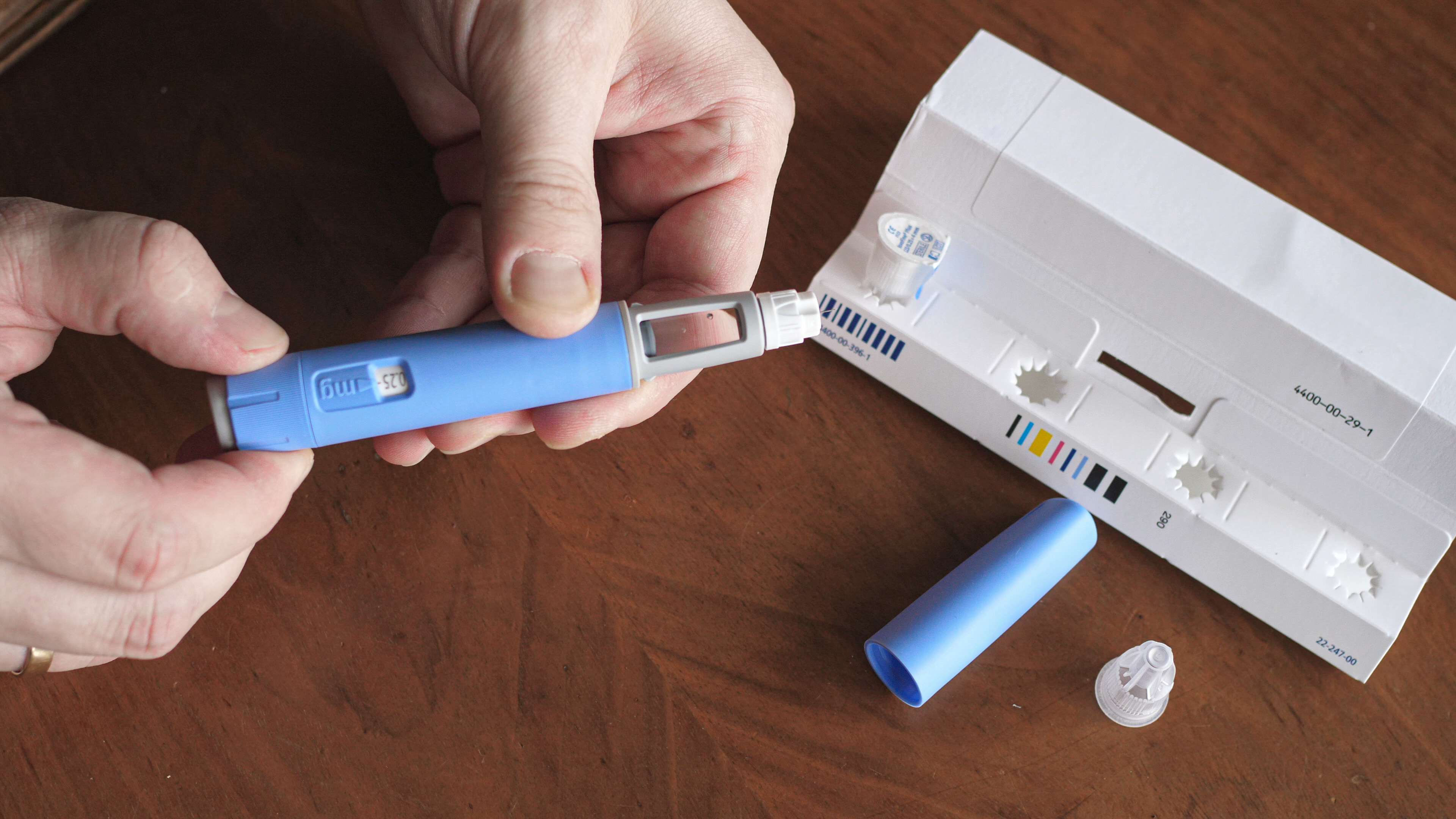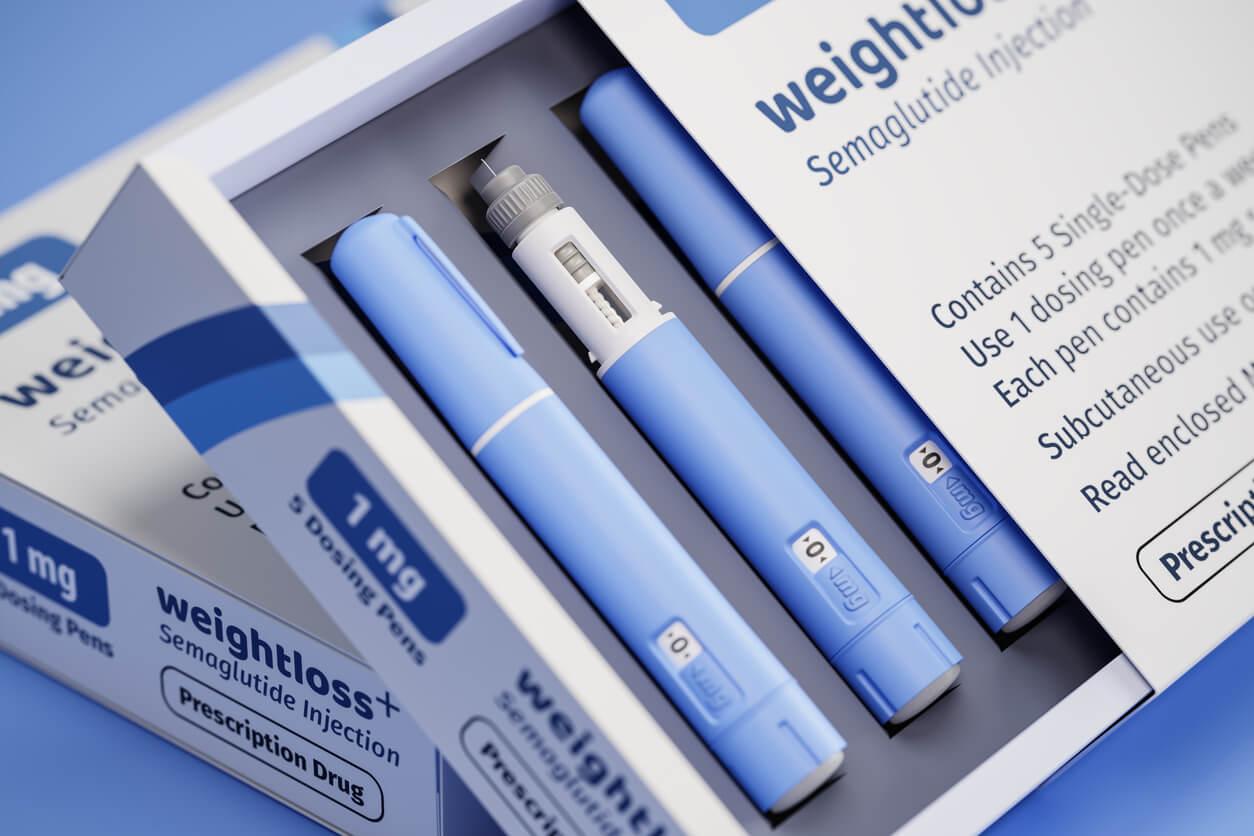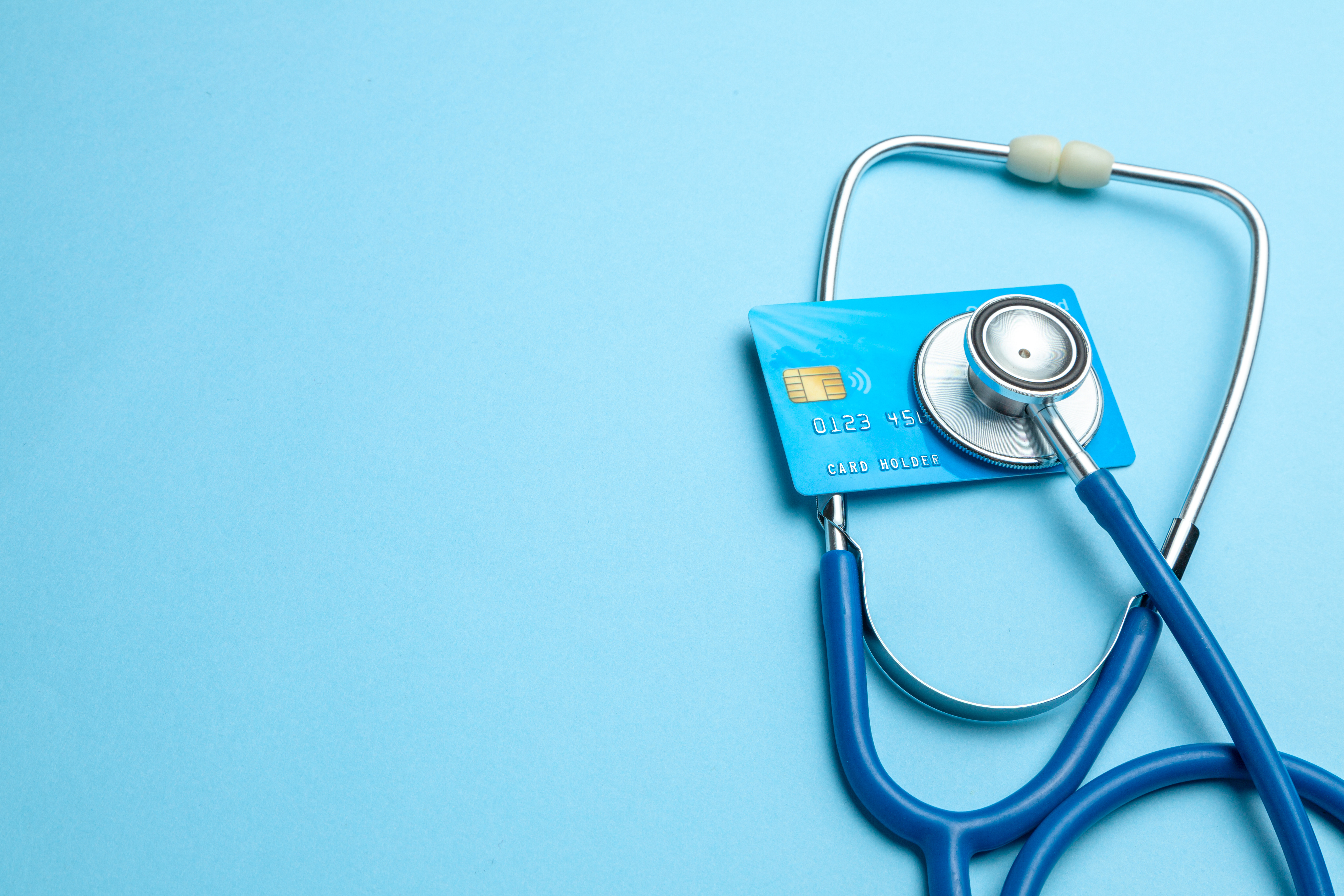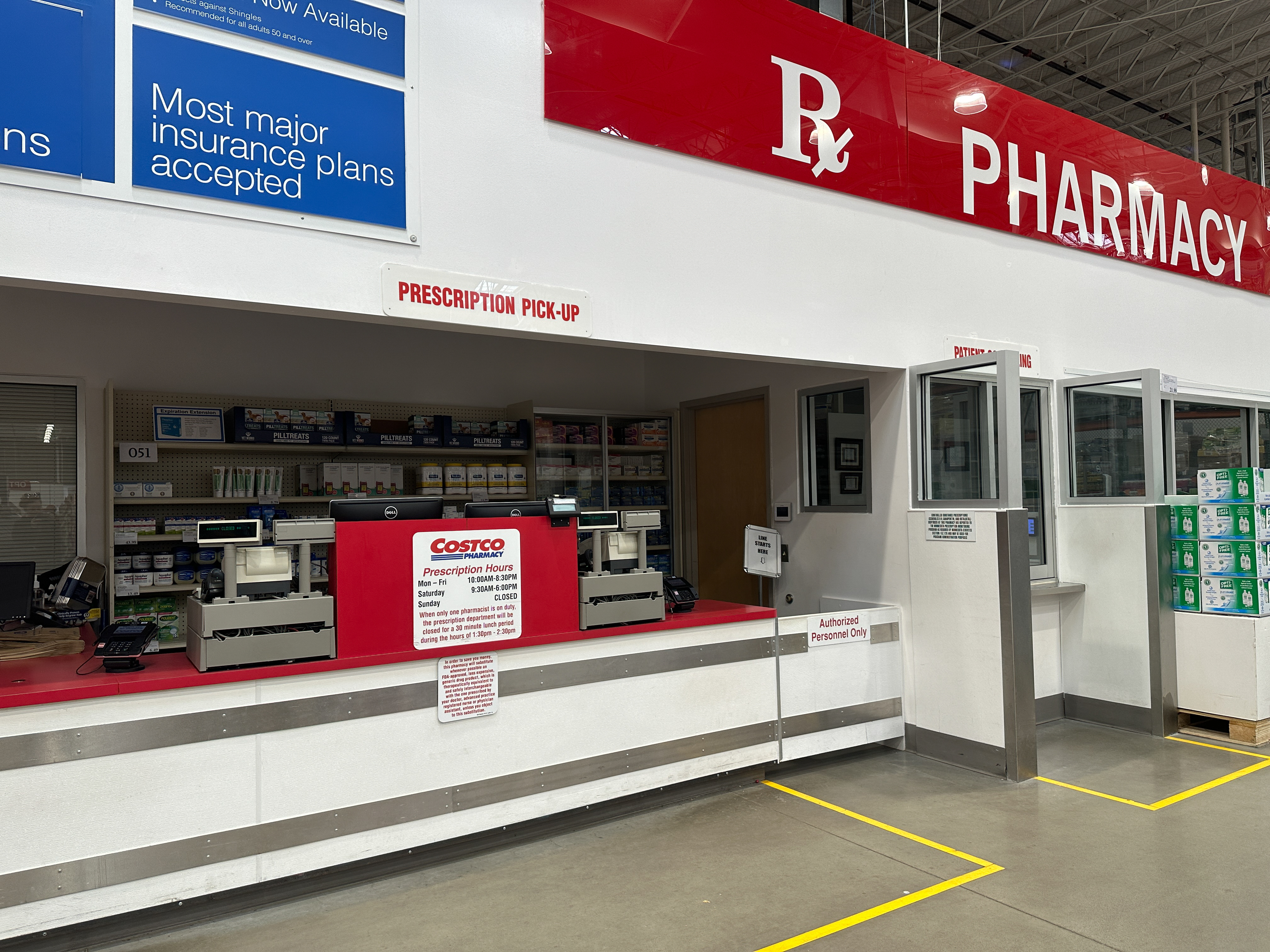How Much Does Mounjaro Cost With & Without Insurance?
Mounjaro (tirzepatide) is a once-weekly injectable medication that is approved by the Food and Drug Administration (FDA) to help regulate blood sugar levels in patients with type 2 diabetes. It contains the active ingredient tirzepatide, which belongs to a new class of drugs called dual glucose-dependent insulinotropic polypeptide (GIP) and glucagon-like peptide-1 (GLP-1) receptor agonists.
Mounjaro is not FDA-approved for weight management. However, multiple clinical trials found that participants not only saw significant reductions in their blood sugar levels but also lost between 12-15 lbs on average. Because of these results, it has become more common for healthcare providers to prescribe Mounjaro for weight loss.
But while Mounjaro is effective, it also comes with a hefty price tag: the retail price for Mounjaro is listed at $1,069.08 for a month supply by Eli Lilly, the drug’s manufacturer. Read on for more information about Mounjaro’s cost with and without insurance, along with ways to save money on your prescription.
How much does Mounjaro cost without insurance?
Without insurance or coupons, Mounjaro typically costs between $1000 to $1200 for a month supply. Most commercial health insurance plans will only cover Mounjaro if it has been prescribed for type 2 diabetes. It is unlikely that health insurance will cover Mounjaro's cost if it has been prescribed for weight loss, since that’s considered an off-label use of the medication.
Is Mounjaro covered by insurance?
It depends. Mounjaro is only approved for the treatment of type 2 diabetes, so most commercial insurance providers will not cover it for weight loss. However, if you have been prescribed Mounjaro for type 2 diabetes management and your health insurance plan covers the medication, you could pay as little as $25 for a prescription fill of Mounjaro.
If you have commercial insurance but your plan doesn’t cover Mounjaro, you may still be able to participate in their patient assistance program. According to Eli Lilly’s website, you may be able to take up to $573 off your 1-month prescription fill of Mounjaro if you have been prescribed Mounjaro for Type 2 diabetes and have commercial insurance that doesn’t cover Mounjaro. However, Eli Lilly only allows a maximum savings of $3,438 per calendar year, which comes out to 6 prescription refills a year.
Not sure if Mounjaro is covered by your insurance? Your insurance company may have a portal where you can check their list of covered prescription medications. You can also call your insurer to request information about the medications they cover.
Why is Mounjaro so expensive?
Like many brand-name medications, Mounjaro is protected by a patent. This means that Eli Lilly can stop other pharmaceutical companies from making their own versions of Mounjaro. Without any competition, the price is not likely to drop by much.
However, when Mounjaro’s patent expires in 2036, other companies will be allowed to manufacture generic versions of the medication that are less expensive (and equally effective).
How can I save money on Mounjaro?
The cost of Mounjaro without insurance is extremely high. There are few people who want to pay $1,069.08 per month for medication - and for some, that price tag is simply unaffordable. Fortunately, there are a few ways to reduce the price of Mounjaro:
1. Get a prescription via telehealth
Mounjaro is a prescription drug, meaning a healthcare professional needs to prescribe it to you. Getting a prescription via telehealth can help you save on the cost of the appointment itself. During the call, your doctor may also be able to give you some tips on how to save on the medication itself.
If you do have health insurance coverage, your insurance company will most likely require prior authorization from your healthcare provider before they decide if they’re covering the cost of your medication. Providers can assist with prior authorization paperwork during your visit to help get your medication covered. However, not all commercial insurance plans cover Mounjaro, even if you do have prior authorization.
2. See if you’re eligible for the Mounjaro savings card
Mounjaro has a patient savings card program available through its manufacturer, Eli Lilly. This may make your medication more affordable, but there are a number of criteria that need to be met first:
- You must be a resident of the United States or Puerto Rico who is 18 years of age or older
- You cannot be enrolled in a federal or state government-funded prescription program such as Medicaid, Medicare Part D or Medigap
- You must be have a Mounjaro prescription for Type 2 Diabetes
For more details about discount card eligibility, visit Eli Lilly’s Mounjaro savings resources page.
3. Search for prescription discount programs
Single Care, Optum Perks and some other sites have discount programs that can help you save money on medication at participating pharmacies.
These programs may be able to provide you with a Mounjaro coupon or code that can be presented at the pharmacy checkout. The pharmacy then processes the discount through specific agreements they have with the discount program providers.
Prescription discount programs can help to lower out-of-pocket costs (especially if you have a high-deductible insurance place or if you’re uninsured). However, the discount can vary quite a bit depending on the medication, pharmacy, and program terms.
Are there alternatives to Mounjaro?
Yes, there are other medications that are similar to Mounjaro. If you can’t access Mounjaro due to cost, supply issues or shortages, have a discussion with your doctor! They can help you explore similar GLP-1 medications and non-GLP-1 medications to see if there’s an alternative medication that could work for you. Some examples include:
Similar GLP-1 Drugs
If Mounjaro isn’t covered by your insurance, another GLP-1 or GLP-1/GIP medication might be. Your provider may prescribe one of these medications as an alternative to help you save.
Some GLP-1 alternatives to Mounjaro are:
- Ozempic (semaglutide)
- Rybelsus (semaglutide)
- Saxenda (liraglutide)
- Trulicity (dulaglutide)
- Victoza (liraglutide)
- Wegovy (semaglutide)
- Zepbound (tirzepatide)
Non-GLP-1 Alternatives
There are several non-GLP-1 medications that are approved for conditions like diabetes but are also sometimes prescribed off-label for weight loss.
Non-GLP-1 diabetes medications include:
- Metformin (Glucophage)Topiramate (Topamax)
- SGLT2 Inhibitors (canagliflozin, dapagliflozin, empagliflozin)
There are also several non-GLP-1 medications that are not prescribed for type 2 diabetes management but that are prescribed for weight loss.
Non-GLP-1 weight loss medications include:
- Bupropion-naltrexone (Contrave)
- Orlistat (Alli, Xenical)
- Phentermine-topiramate (Qsymia)**
**It is important to note that phentermine, one of the active ingredients in Qsymia, is a controlled substance. Many providers require an in-person visit before prescribing a controlled substance and therefore will not prescribe the medication via telehealth visit.
How Sesame can help
Sesame offers an affordable and comprehensive online weight loss program to help you get started on your weight loss journey. Success by Sesame is a month-to-month subscription that includes a video consultation with a weight loss doctor or specialist of your choice, access to prescriptions for weight loss medication if appropriate, unlimited messaging with your provider, ongoing support, and more.
Maintaining a healthy weight can lead to significant health benefits, including a lower risk of heart disease, improved mobility, better sleep, and enhanced overall well-being. Get started on your weight loss journey today. Note that all prescriptions are at the discretion of your healthcare provider.
Related posts

While Zepbound may be effective, it can also be extremely pricey. In this post, we'll explore what you can expect to pay for Zepbound out of pocket, along with ways to save on this medication.

Wegovy costs about $1,349.02 per month, or $349 per month for self-pay patients. Learn more about how much Wegovy costs with and without insurance, plus tips to save money on a Wegovy prescription.

Ozempic costs about $998 per month, or $349 for self-pay patients. Learn more about how much Ozempic costs with and without insurance, plus tips to save money on an Ozempic prescription.

Learn about the available savings programs for popular weight loss medications like Wegovy, Zepbound, Ozempic, Rybelsus, Victoza, and Saxenda.

This article will examine how effective Mounjaro is as a weight loss drug, how it works, and what to consider before taking it.

As a result of drug shortages and high prices, many people are exploring Ozempic alternatives. To make your search easier, we’ve detailed every GLP-1 on the market below – along with a comparison of cost, dosing amount and how it varies from Ozempic.

Compare the effectiveness, side effects and prices of weight loss and diabetes medications Mounjaro and Wegovy.

Learn how Costco Members can get prescriptions for Ozempic and Wegovy at half the price, no insurance required.

Cost factors for magnetic resonance imaging procedures
